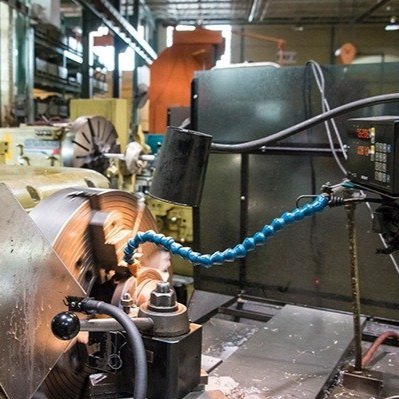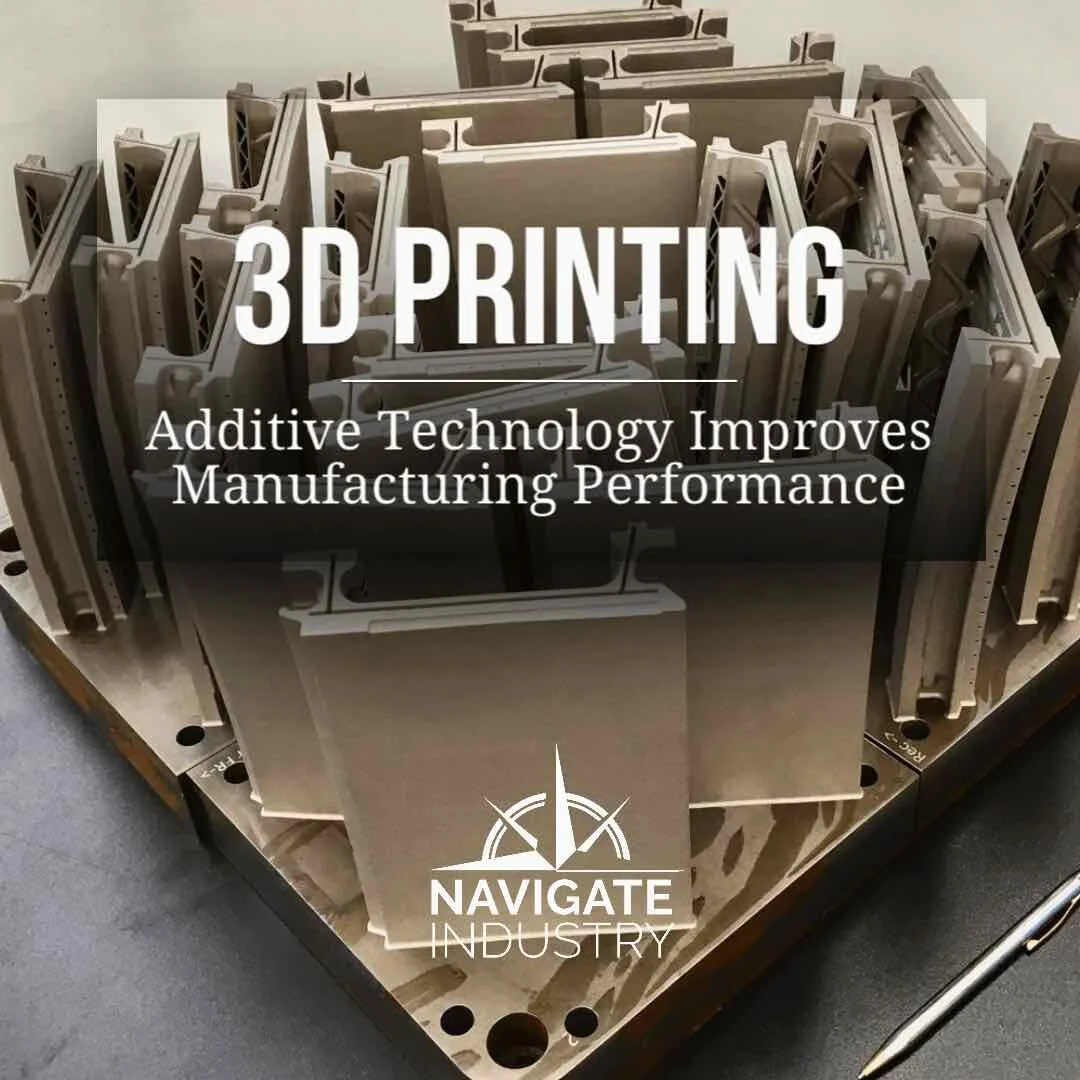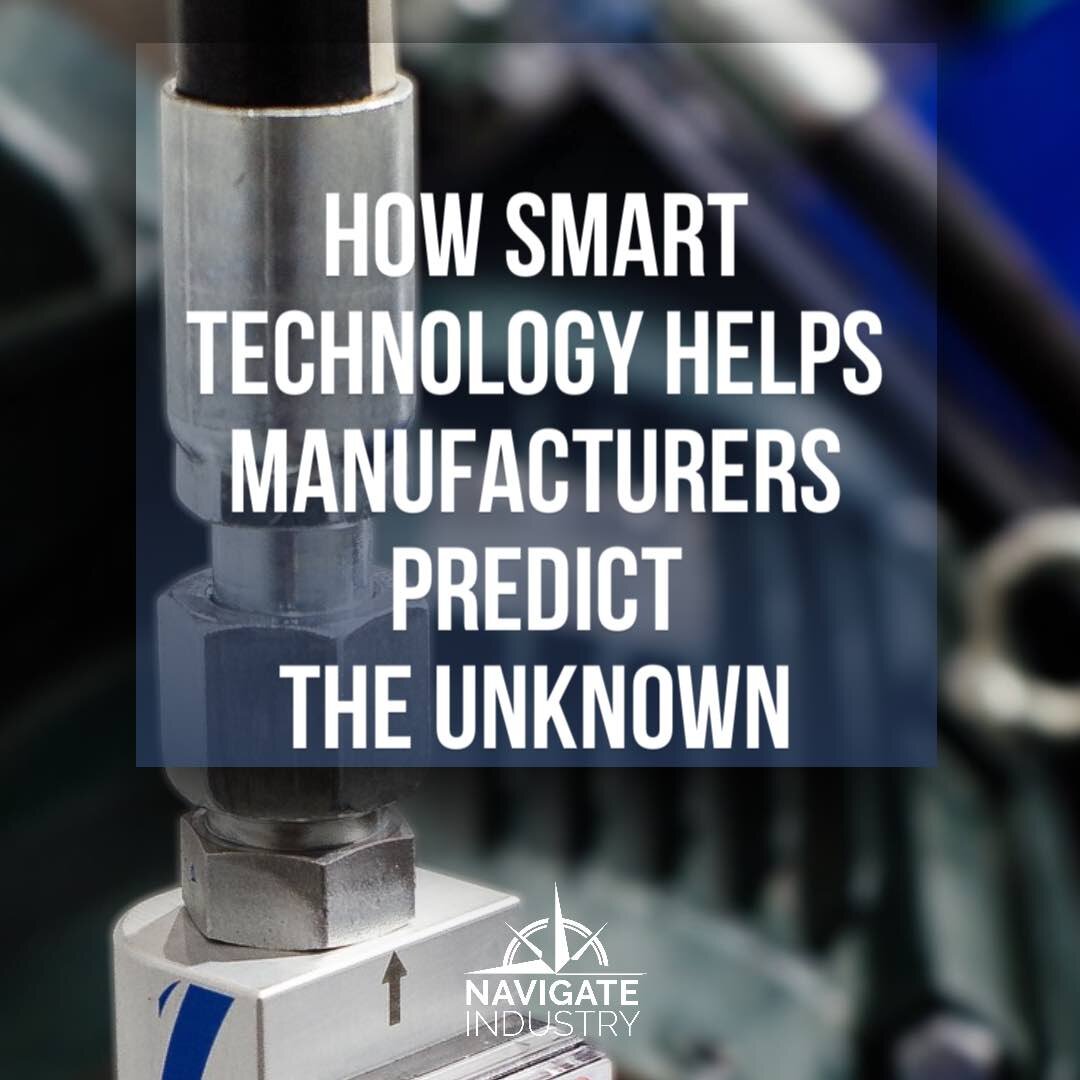How Smart Technology Helps Manufacturers Predict the Unknown
/Jeremy Drury and Rex Wetherill use their experience and expertise to simplify the art of predicting unplanned downtime by making, moving, and managing data for manufacturers. By using smart technology that makes the sophisticated Internet of Things (IoT) “as easy as 1-2-3” they help end users quickly convert reactive maintenance into a proactive strategy.
By Michelle Segrest, Reporting on the Industry
Jeremy Drury and Rex Wetherill work every day with application-focused maintenance and reliability professionals in a variety of industries who all share one common nightmare.
“When I ask people what keeps them up at night, it’s always their failing equipment,” said Drury, the president of IoT Diagnostics who was the keynote speaker at the National Fluid Power Association’s Annual Conference for multiple years and sits on their IoT Committee. His background in global product management and brand strategy drives the company vision that manufacturers can predict equipment failure and prevent it.
“The people who live and breathe that nightmare of what’s going to break tomorrow when I get to work…those are our customers,” Drury said. “They also ask questions like, ‘What’s going to affect my uptime?’ These are the people that our technology helps.”
IoT Diagnostics creates smart technology that makes valves, pumps and other equipment smarter for the fluid power industries. “We are not an IoT company looking to solve fluid power problems,” he explained. “We are an industrial fluid power company using IoT to solve problems we’ve been seeing for years and years. We are not another software company telling people how to run their equipment. We make IoT simple and available.”
In their experience, Drury and Wetherill contend that the big overarching problem that manufacturers have is unplanned equipment downtime. However, approaching IoT to solve that problem can be intimidating for old-school operators as well as manufacturing management.
Drury said there are three big problems with using IoT in manufacturing:
1. Unreliable Information—“People are still using paper records,” he said. “They don’t use good data. In some cases, they are using biased and gut assumptions.”
2. Big Shift in Talent—“There are all these machine whisperers who are retiring in droves,” Drury explained. “These guys would literally show up with a screwdriver, an ear, and their gut and tell you exactly what’s going on. But this is not sustainable long term. I met with a phenomenal machine guy who is going deaf and now loses his greatest tool. This gap has not been filled so that whole training and handoff of knowledge is not happening.”
With the skills gap in manufacturing, late stage millennials entering the workforce must rely on technology. Without decades of experience or the vintage knowledge, they may not understand why the equipment fails or how to fix it. Therefore, training along with technology is crucial for these incoming professionals.
3. The Disconnected Ecosystem—The end user who is trying to understand their pumps and valves and other equipment is surrounded by a value chain of original equipment manufacturers (OEMs), who will put an infinite amount of resources in the next pump that goes into the market. However, according to Drury, they may lose sight of the big picture because they are focused on designing and developing more equipment.
“There are hundreds of thousands of pumps and valves out in the field that the OEMs don’t have any insight into—what we call brown field,” Drury explained. “The maintenance and service companies do not have enough quality data and information to service the equipment and the customers. The suppliers and the distributor channels don’t really communicate well together. They are not delivering enough good data to the engineers and the OEMs so they can determine why things are failing in the first place. All of these things come together, and the response time to secure good data becomes a win across the board.
Using Critical Data from Smart Sensors to Tackle Unplanned Downtime
Once the fear of technology is overcome, Drury and Wetherill believe in providing an easy solution to tackle the core problems of IoT.
“What most manufacturers don’t understand is that you can literally get a device, get it on the network, get it scaled, and start looking at data in a matter of minutes,” Drury said. “Everything we build can plug right into a pump, a valve, a hydraulic press, or a hydraulic power unit with a minimal investment.
Drury said there are three critical pieces to tackling the core problems of IoT:
1. Make Data. Use the correct, contextualized, smart sensors that will get the data.
2. Move Data. Get the data to the right people. IoT Diagnostics uses an application called IoT Assist that easily configures new smart sensors. “For some companies, it takes eight PhDs to get the binary data into an actual readable temperature curve,” he said. “Through simple technology, this app eliminates that headache.”
3. Manage Data. End users can log into the app from anywhere and see all the sensing devices connected and providing critical data in real-time. They can immediately see event log and alarm states, performance changes, and determine what to do with all the data.
Filling the Manufacturing Skills Gap
Drury describes long-time manufacturing operators as “machine whisperers,” because they use their senses to diagnose equipment failures more than concrete data. But as these veterans are retiring, this leaves a significant talent and skills gap in manufacturing. New technology and data-retrieving devices can help to fill this gap.
By placing sensors on valves, pumps, and other equipment, performance trends can be considered, and possible equipment failures can be detected before they happen.
“In maintenance, when something breaks everyone comes together to decide what to do,” said Rex Wetherill, Founder & CEO of IoT Diagnostics. “Everyone reacts, and it’s all hands on deck to get things up and running. Our mission is to provide the data that they can then use to do predictive analytics. They can see trends, for example with a pump or valve, that shows clearly that the end is near. They can then make sure this preventive maintenance gets in the next scheduled downtime.”
Wetherill said that having the right data can give crucial insight into equipment health.
“Most manufacturers have no visibility to the components of the machine, at least on the hydraulic side,” Wetherill said. “These guys are in a dark closet, and we just want to put a window in there so they can see that a storm is coming.”
Making a difference with data doesn’t have to be a huge project, or an expensive one.
“A lot of people in this business want to outfit your entire manufacturing plant. We are pretty focused in that we can help people get started,” Wetherill said. “We can put a sensor on their pump and within minutes be looking at key data. And this can be done inexpensively. It can be put on a maintenance guy’s credit card. When they begin to understand how it works and see that it’s remote, they begin to see the value.”
Drury and Wetherill do not suggest that sensors can replace humans. Rather, key data can enhance and validate the gut instincts of the professionals.
“The machine whisperers can get great validation by having the data to match their instincts,” Wetherill said. “We’ve heard them many times say, ‘I knew it! I felt it in my gut!’ To have it confirmed with real data can be powerful.”
For the younger, less experienced, but more tech-savvy new generation of operators, IoT technology can help them dissect equipment failures without decades of operational experience.
Drury further explained how IoT can enhance the experience of veteran operators.
“We like to refer to a fictional guy on the manufacturing floor named Boomerang Ted,” Drury said. “He is a typical maintenance and reliability leader who walks the shop floor and can’t even have a conversation because his phone won’t stop ringing. He boomerangs from one end of the floor to the other putting out fires and fixing breakdowns. He’s the only one who can fix things. So, what happens when he goes on vacation or gets sick? Or worse, what happens when he retires? This can make manufacturers scratch their heads about what will happen when there is no one in the pipeline with his experience and knowledge.”
This is where smart technology can relieve the stress of the retiring workforce.
“Boomerang Ted is still valuable,” Drury insisted. “Maybe you have a valve that blows and now you are shooting micron particles everywhere. Someone still has to go fix that. But Big Data can create force multiplication. Sensor technologies simply multiply the skills and talents of Boomerang Ted. If a manufacturer has 500 pumps to take care of and only one person, it’s not physically possible for him to do proper PMs on those all year long. If each piece of equipment has a sensor, now the maintenance and reliability force has been multiplied. Boomerang Ted can now sit anywhere in the world and literally have much more visibility to rank and prioritize the health of the pumps and perhaps focus on a particular 12 or so that are about to fail.”
Can Data Predict Equipment Failures?
One thing all operators agree on is that eventually equipment will fail. The secret is to predict when that will happen and to try to prevent it. Can enough predictive maintenance be performed so that systems don’t have to be shut down, costing the manufacturer expensive downtime?
“When you have data, you can immediately see trends and other information,” Wetherill explained. “We talk about unplanned downtime all the time. I’ve been in this business for 38 years. In my experience, we would maybe propose something that may help the customer, but we couldn’t get the expense justified. They just couldn’t find the money to do it, but they could find unlimited amounts of money to throw at it when the machine broke down. I could never understand that mentality—this you-can-pay-me-now-or-you-can-pay-me-later mentality.”
One of the biggest obstacles is convincing manufacturers that data retrieved from sensors and smart technology can predict and prevent failures.
“Industrial data can be a zero-sum game,” Drury said. “We don’t want to trade the time you spend fixing the equipment for time looking at data. Sexy dashboards will become like anti-lock brakes on a car. We don’t even think about how we now have all these sensors on our car giving us data like low tire pressure. Can you image driving a car without a gas gauge? With smart technology we can see trends and reports in just a few seconds. There is no limit to the number of pieces of equipment that can be connected. There is a beauty to connecting the dots of data.
“The more data you have, the more the window opens. Then you continue to add to the system to open the universe of information. Now Boomerang Ted feels like he is in the driver’s seat instead of living on the edge of chaos. The biggest path to burnout is to have all the passion but lack the agency and equipment to get the things done that you want to get done. This data gives people the means to have control of their operation.”
Michelle Segrest is President of Navigate Content, Inc., a full-service content creation firm. She specializes in reporting about manufacturing and rotating equipment used in the industrial processing industries. Contact her at michelle@navigatecontent.com




















